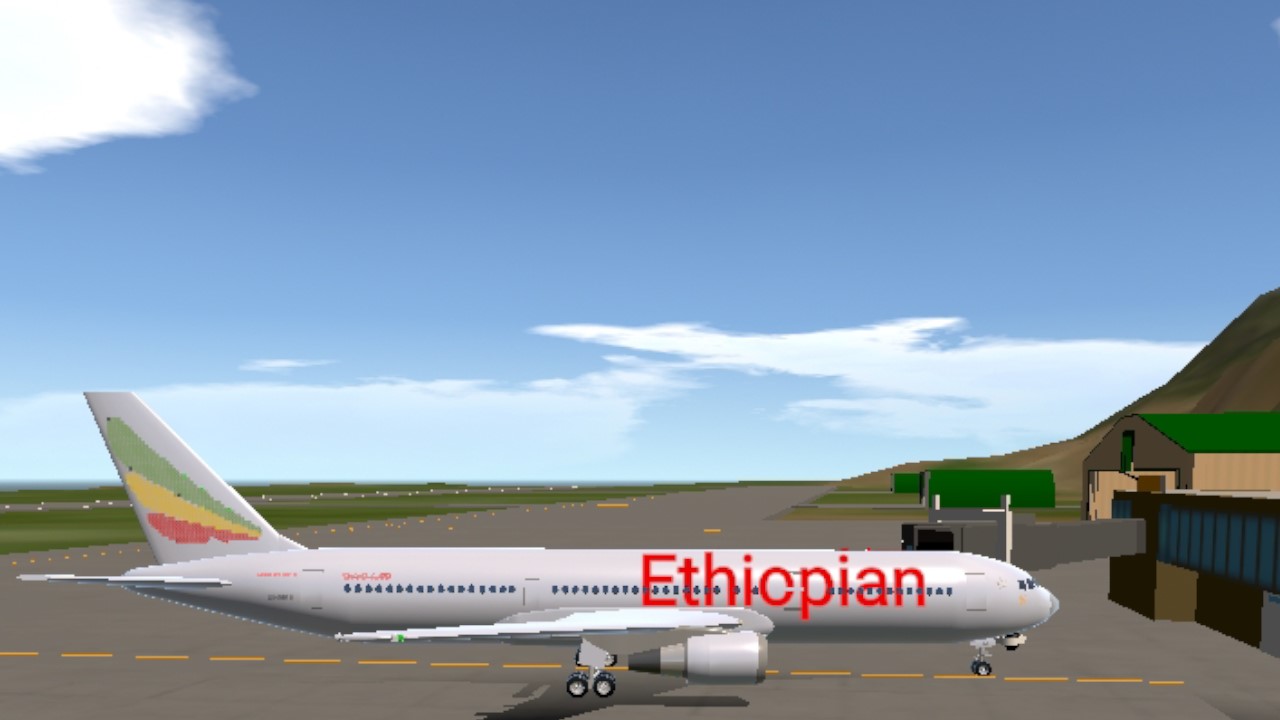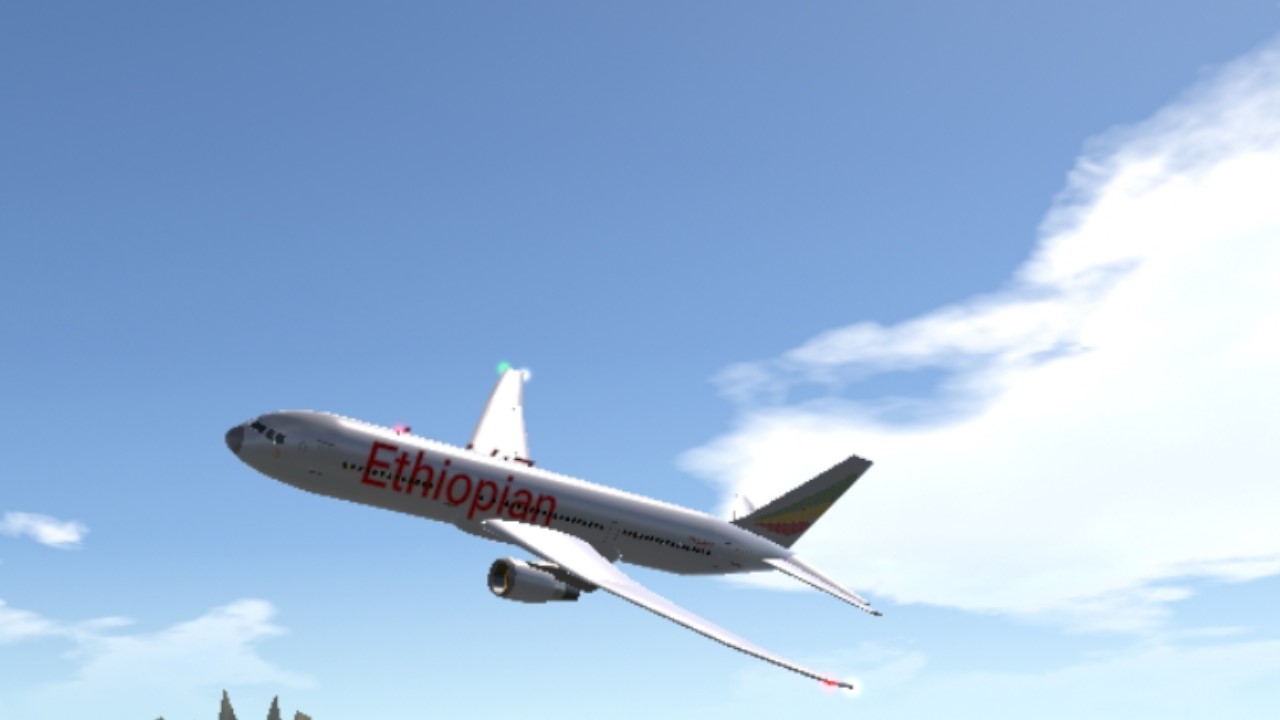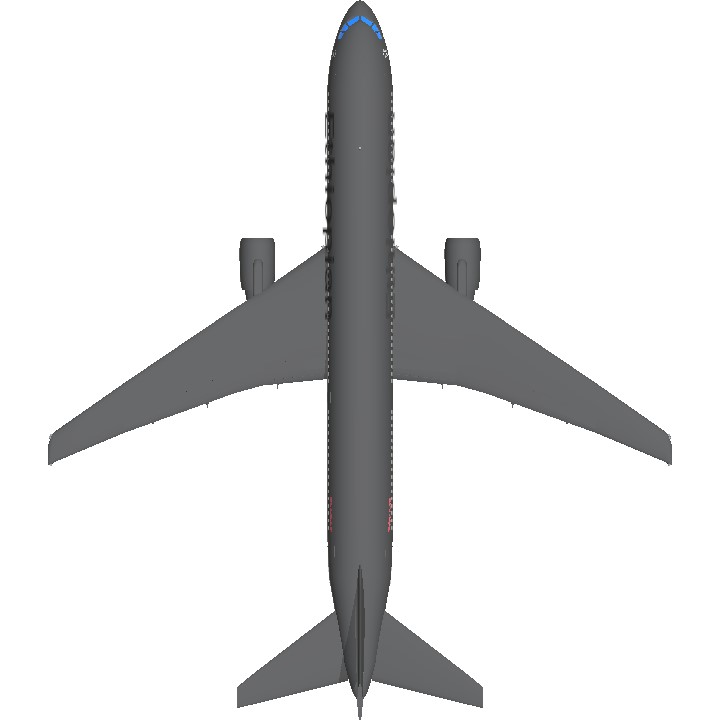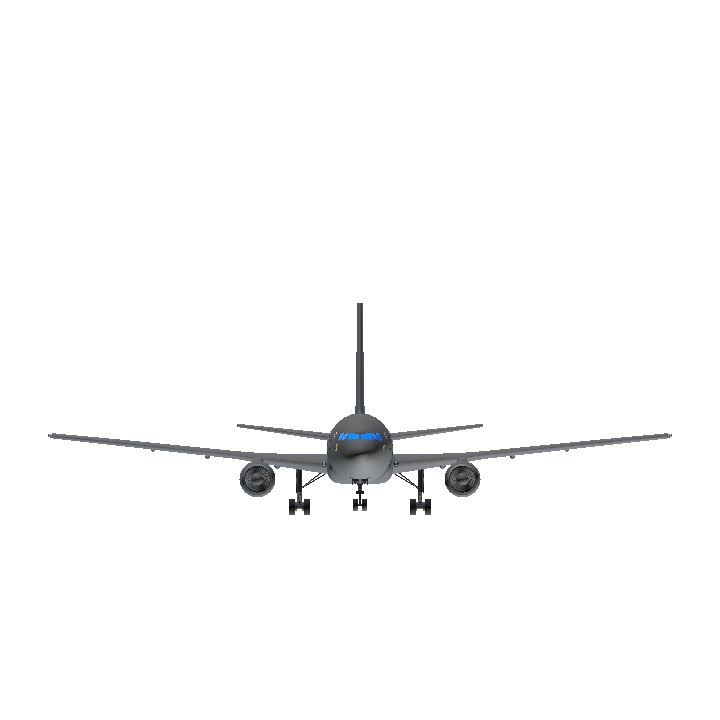Boeing 767
The Boeing 767 is an American wide-body airliner developed and manufactured by Boeing Commercial Airplanes. The aircraft was launched as the 7X7 program on July 14, 1978, the prototype first flew on September 26, 1981, and it was certified on July 30, 1982. The initial 767-200 variant entered service on September 8, 1982, with United Airlines, and the extended-range 767-200ER in 1984. It was stretched into the 767-300 in October 1986, followed by the extended-range 767-300ER in 1988, the most popular variant. The 767-300F, a production freighter version, debuted in October 1995. It was stretched again into the 767-400ER from September 2000.

A Boeing 767-300 of Delta Air Lines, the largest operator of the passenger 767 as of 2023
Designed to complement the larger 747, it has a seven-abreast cross-section accommodating smaller LD2 ULD cargo containers. The 767 is Boeing's first wide-body twinjet, powered by General Electric CF6, Rolls-Royce RB211, or Pratt & Whitney JT9D turbofans. JT9D engines were eventually replaced by PW4000 engines. The aircraft has a conventional tail and a supercritical wing for reduced aerodynamic drag. Its two-crew glass cockpit, a first for a Boeing airliner, was developed jointly for the 757 - a narrow-body aircraft, allowing a common pilot type rating. Studies for a higher-capacity 767 in 1986 led Boeing to develop the larger 777 twinjet, introduced in June 1995.
The 159-foot-long (48.5 m) 767-200 typically seats 216 passengers over 3,900 nautical miles [nmi] (7,200 km; 4,500 mi), while the 767-200ER seats 181 over a 6,590 nmi (12,200 km; 7,580 mi) range. The 180-foot-long (54.9 m) 767-300 typically seats 269 passengers over 3,900 nmi (7,200 km; 4,500 mi), while the 767-300ER seats 218 over 5,980 nmi (11,070 km; 6,880 mi). The 767-300F can haul 116,000 lb (52.7 t) over 3,225 nmi (6,025 km; 3,711 mi), and the 201.3-foot-long (61.37 m) 767-400ER typically seats 245 passengers over 5,625 nmi (10,415 km; 6,473 mi). Military derivatives include the E-767 for surveillance and the KC-767 and KC-46 aerial tankers.
Initially marketed for transcontinental routes, a loosening of ETOPS rules starting in 1985 allowed the aircraft to operate transatlantic flights. A total of 742 of these aircraft were in service in July 2018, with Delta Air Lines being the largest operator with 77 aircraft in its fleet. As of June 2024, Boeing has received 1,407 orders from 74 customers, of which 1,312 airplanes have been delivered, while the remaining orders are for cargo or tanker variants. Competitors have included the Airbus A300, A310, and A330-200. Its successor, the 787 Dreamliner, entered service in 2011.
Ethiopian Airlines Flight 702
Ethiopian Airlines Flight 702 was a scheduled flight from Addis Ababa to Milan via Rome on 17 February 2014. The aircraft, an Ethiopian Airlines Boeing 767-3BGER, was hijacked by the unarmed co-pilot, Hailemedhin Abera Tegegn, en route from Addis Ababa to Rome.

ET-AMF, the aircraft involved, photographed in 2019
Aircraft

ET-AMF, when it was still in service with Hainan Airlines, utilizing a previous livery and registeration
The aircraft involved was a Boeing 767-3BGER, MSN 30563, registered as ET-AMF, that was built by Boeing Commercial Airplanes in 2000. The aircraft was equipped with two Pratt & Whitney PW4062 engines.
Accident
Flight 702 was scheduled to depart from Addis Ababa Bole International Airport in Addis Ababa, Ethiopia, at 00:30 EAT (UTC+3) on 17 February 2014. The aircraft's transponder began to emit squawk 7500 — the international code for an aircraft hijacking — while flying north over Sudan. When the pilot exited the cockpit to use the restroom, the co-pilot locked the cockpit door and continued to fly the aircraft.
The flight was scheduled to arrive at Leonardo da Vinci–Fiumicino Airport in Rome, Italy, at 04:40 CET (UTC+1), before continuing to Malpensa Airport in Milan, Italy. Instead, the aircraft was flown to Geneva, Switzerland, where the co-pilot circled several times while communicating with air traffic control at Geneva International Airport while trying to negotiate political asylum for himself and an assurance that he would not be extradited to Ethiopia.
At 06:02 CET (UTC+1), the airplane landed at Geneva International Airport with about 10 minutes of fuel remaining, and having suffered the flameout of one engine.
The co-pilot exited the aircraft by scaling down a rope he threw out of the cockpit window before walking over to police; he surrendered after identifying himself as the hijacker, and was taken into custody. The airport was briefly shut down during the incident; no passengers or crew were injured.
The flight was escorted by Italian Eurofighter and French Mirage fighter jets while traversing their respective airspaces. The Swiss Air Force did not respond because the incident occurred outside normal office hours, which are 08:00–12:00 and 13:30–17:00 Monday to Friday; a Swiss Air Force spokesman stated: "Switzerland cannot intervene because its airbases are closed at night and on the weekend. It's a question of budget and staffing. Switzerland relies on neighboring countries to police its airspace outside of regular business hours; the French and Italian Air Forces have permission to escort suspicious flights into Swiss airspace, but do not have authority to shoot down an aircraft over Switzerland.
Consequences
Hijacker
The hijacker of Flight 702 was Hailemedhin Abera Tegegn, 31, who was the co-pilot of flight 702.
In May 2014, the Swiss government declined a request by the Ethiopian government to extradite Hailemedhin to Ethiopia. Swiss authorities initially said that Hailemedhin would face trial in Switzerland. However, in November 2015, the Swiss public prosecutor determined that Hailemedhin (who had been detained in Switzerland ever since his arrest) would not be prosecuted after a panel of experts "unanimously decided that Hailemedhin was in a state of complete paranoia" during the hijacking and was incapable of rational thinking. Hailemedhin was then set to appear before a Swiss federal court, which would order the pilot to undergo mental health treatment.
In March 2015, the Ethiopian high court in Addis Ababa convicted Hailemedhin in absentia and sentenced him to 19 years and six months in jail.
Swiss Air Force
The limitations of Switzerland's air defences were made apparent by this incident. Although a proposal to improve coverage was already in motion, the hijacking led to the implementation of a 24-hour readiness organization. From 4 January 2016, a pair of Swiss F/A-18 Hornets were kept at 15 minute QRA readiness between 8.00am and 6.00pm on weekdays. This was increased as of 2 January 2017 to the same hours daily. Since 31 December 2020, the Swiss Air Force maintain a pair of interceptors at 15 minute readiness 24 hours a day for 365 days a year.
Specifications
General Characteristics
- Predecessor [updated]B767-300ER[GE]
- Created On Android
- Wingspan 156.2ft (47.6m)
- Length 180.3ft (55.0m)
- Height 77.5ft (23.6m)
- Empty Weight N/A
- Loaded Weight 94,300lbs (42,774kg)
Performance
- Power/Weight Ratio 0.619
- Horse Power/Weight Ratio 0.031
- Wing Loading 24.4lbs/ft2 (119.1kg/m2)
- Wing Area 3,866.8ft2 (359.2m2)
- Drag Points 14132
Parts
- Number of Parts 504
- Control Surfaces 9
- Performance Cost 3,254





